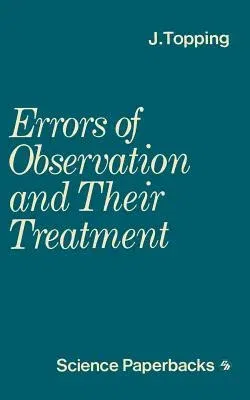This little book is written in the first place for students in technical
colleges taking the National Certificate Courses in Applied Physics; it
is hoped it will appeal also to students of physics, and pernaps
chemistry, in the sixth forms of grammar schools and in the
universltIes. For wherever experimental work in physics, or in science
generally, is undertakcn the degree of accuracy of the measurements, and
of the res, !lts of the experiments, must be of the first importance.
Every teacher of experimental physics knows how "results" given to three
or four decimal plaees are often in error in the first place; students
suffer from "delusions of accuracy. " At a higher level too, more
experieneed workers sometimes claim a degree of accuracy which cannot be
justified. Perhaps a considera- tion of the topics discussed in this
monograph will stimulate in students an attitude to experimental results
at onee more modest and more profound. The mathematical treatment
throughout has been kept as simple as possible. It has seemed advisable,
however, to explain the statistical concepts at the basis of the main
considerations, and it is hoped that Chapter 2 contains as elementary an
account of the leading statistical ideas involved as is possible in such
small compass. It is a necessary link between the simple introduction to
the nature and estimation of errors given in Chapter 1, and the theory
of errors discussed in Chapter 3.


